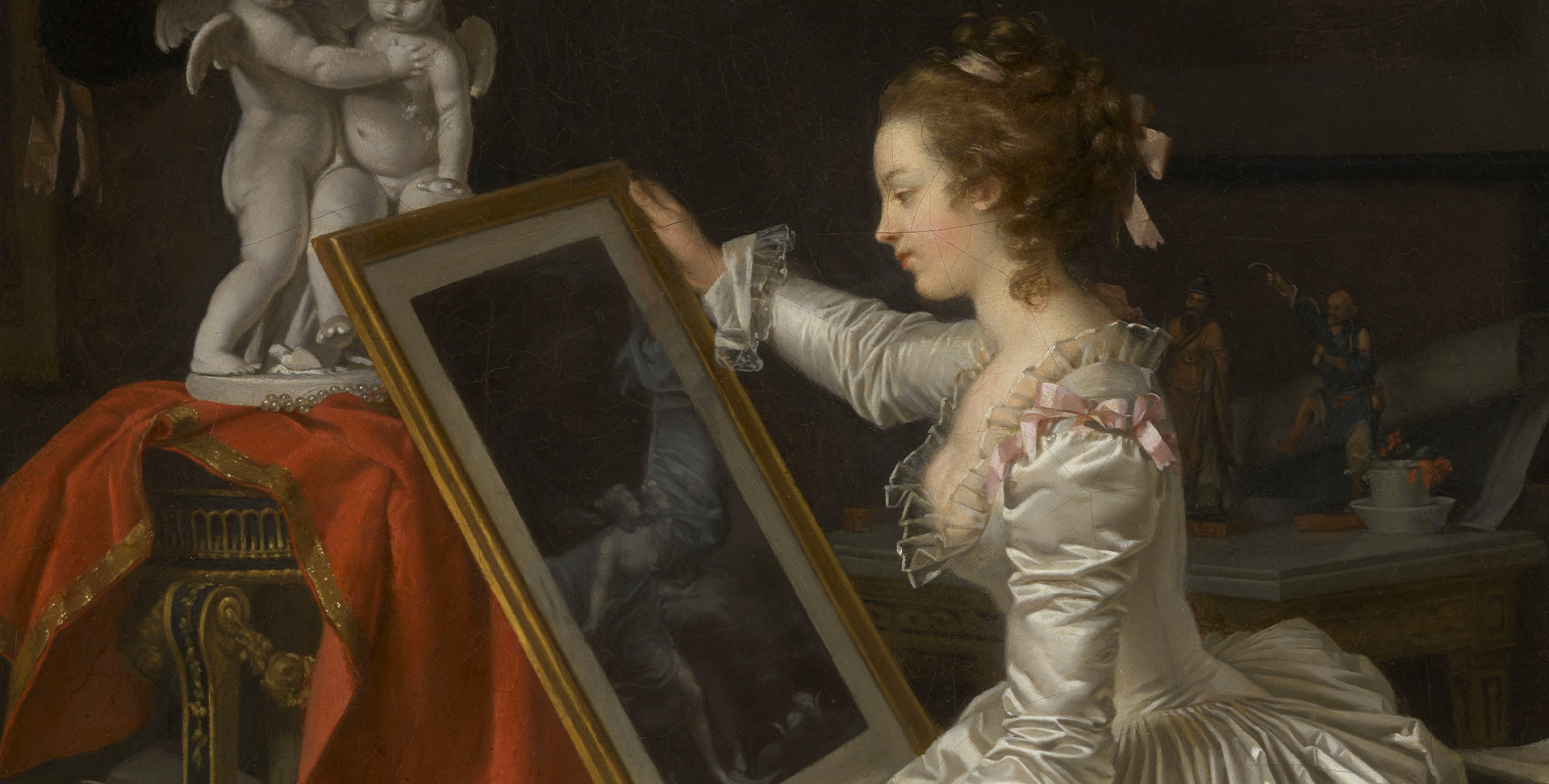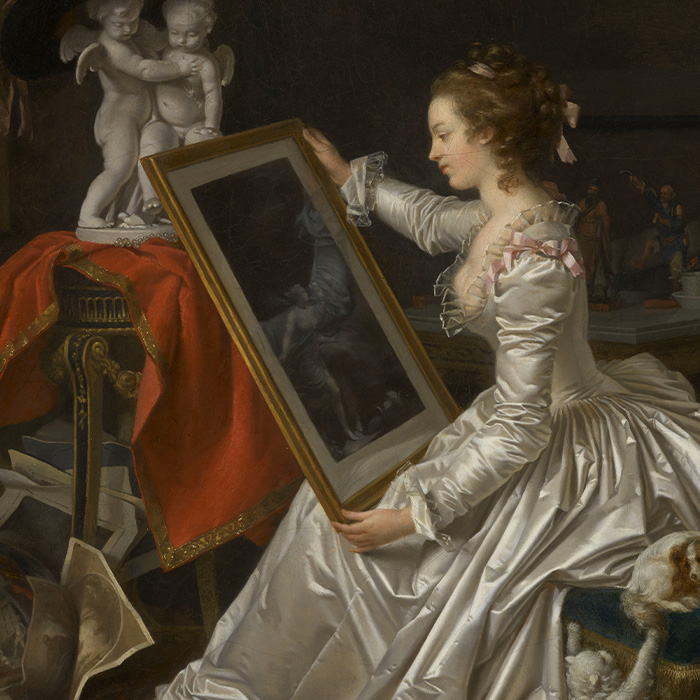


A bit like the National Museum of Fine Arts in Algiers, which lacked works by Algerian artists, the majority of museums lack works by women artists… even today!
In France in 2021, works of art produced by women represented only 4% of the total in museum collections.
And in 2012, the activist group Guerrilla Girls highlighted that less than 4% of artists in the Modern and Contemporary Art department at The Metropolitan Museum of Art in New York are women… while women represent 76% of the nudes on display!
Why such a high proportion of female nudes? Well, for a very long time male artists (for whom it was easier to be a professional artist than it was for women) produced works for male patrons. And these patrons’ tastes leaned more towards female subjects, often with a touch of eroticism.


In museum collections, there are few works by female artists but many works depicting women.
Who are the women depicted in the works, or the “models”, as we call them?
First of all, they could be the patron of the work, therefore belonging to the wealthiest sectors of society. This is the case, for example, with the famous Mona Lisa.
The identity of the model has been debated at length, but it is very probably Lisa del Giocondo, the wife of a wealthy Florentine cloth merchant.
She is so popular today that she appears as a guest star in a Jay-Z and Beyoncé music video.
When not working on a commission, artists often made do with the models they had to hand… their nearest and dearest!
Professional models were first used in private studios, and then in painting academies, where life drawing sessions would take place.
To paint this picture, Corot called upon Emma Dobigny, a renowned professional model who had already posed for other painters such as Edgar Degas and Édouard Manet!
In any case, “model” does not necessarily mean “passive” – some became genuine advisers, at a time when the artist was usually alone in front of their canvas. An outside perspective is welcome sometimes!


The models who posed for works may have been the patrons themselves, people close to the artist, or professional models.
Women have been practising their art in this domain for ages! Let’s look at a few instruments that date back to ancient times:

Depictions of female musicians and musical instruments bear witness to their existence, particularly in antiquity.
Wishing to disqualify a woman he identified as a threat, in antiquity a Roman politician said that she sang and danced more skilfully than was necessary for an honest woman. What did he really mean?
It demonstrates the ambivalent regard in which female musicians and dancers were often held.
On the one hand, music was considered a “high art”, especially when practised in certain circumstances, such as during religious ceremonies or privately in artistic lessons.

The practice of music by women is considered virtuous under certain conditions and associated with vice in others.

The name Isabelle d’Este may not mean anything to you yet, but she had such a profound influence in 15th-century Italy that she was given the nickname the “First Lady of the Renaissance”!
Why such an honour? Her role as patron meant that she used her fortune to support the work of artists by, for example, commissioning works. This allowed painters like Leonardo da Vinci, Michelangelo and Andrea Mantegna to make ends meet.
As an added bonus, Isabelle d’Este took over the reins of government on several occasions when her husband was absent. It was no problem for this gutsy woman who knew a thing or two about politics and geopolitics!


Female benefactors like the Italian Isabelle d’Este had a major influence on artistic and political life.

As you’ve learnt during this journey, while women feature heavily in works of art, fewer have been recognised as professional artists. That doesn’t mean that they didn’t exist, though, and some have even garnered an international reputation!
Some managed to earn their living and become famous renowned thanks to their artistic endeavours, such as Vigée-Le Brun, Rosalba Carriera and others.
History is still being written! We must bear in mind that many of the oldest works are not signed, and could just as well have been produced by women.
Let’s not forget that many women worked in family studios that bore the name of their father or husband.
It’s not easy to untangle everything, but historians continue to carry out research to help us discover more and more women artists!

Historical research continues to identify works created by women.
…and stories of women artists are increasing. Let’s go to the Middle East to learn about three women who have some things to say.

Since the 20th century, more women have gained professional artist status and reappropriated representations of women.

"*" indicates required fields